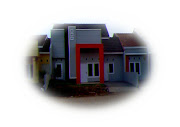
Tata Nano, Mobil Termurah dan Irit di Dunia
Jakarta-Rekor China sebagai produsen mobil termurah di dunia kini terpatahkan oleh India. Tata Motor Co telah merilis Tata Nano, mobil termurah di dunia dengan harga hanya 100.000 rupee atau Rp 22,5 juta per unit, yang diluncurkan 10 Januari pada New Delhi Auto Show. Kendati disambut skeptis para analis, mobil murah tersebut tetap akan dipasarkan di India dan negara-negara berkembang.
Peluncuran mobil itu dilakukan di tengah makin dekatnya momentum pengumuman Tata sebagai pemenang akuisisi atas divisi Jaguar dan Land Rover, dua merek mobil premium milik Ford Motor Co.
Ratan Tata, Chairperson Tata Group--induk perusahaan Tata Motor Co, mengatakan, Tata Nano memiliki sasaran pasar para pemilik sepeda motor yang ingin beralih ke mobil. “Saya berharap mobil ini dapat memberi pilihan baru kepada konsumen karena lebih aman ketimbang sepeda motor,” ujar Ratan seperti dikutip Times of India, akhir pekan lalu.
Mahantesh Sabarad, analis pada Prabhudas Lilladher mengatakan, upaya mengalihkan minat pemilik sepeda motor di India ke mobil tidaklah mudah dilakukan karena jika pemilik sepeda motor ingin beralih ke mobil, akan ada banyak mobil bekas yang harganya lebih murah dari 100.000 rupee atau setara US$ 2.500.
“Kendaraan roda dua yang paling populer sekalipun, harganya 35.000-40.000 rupee per unit, jadi perbedaan harga yang jauh dengan mobil murah buatan Tata menjadi kendala. Selain itu, biaya perawatan mobil juga lebih mahal ketimbang sepeda motor,” ujar Sabarad.
Di India, mobil termurah keluaran Suzuki, yakni Maruti 800, dijual dengan harga 192.124 rupee (US$ 4.885) per unit, hampir dua kali lipat dari harga mobil Tata. Peluncuran mobil murah itu mendorong Suzuki ikut-ikutan menurunkan harga.
Tata Nano menggunakan mesin 33 tenaga kuda, 624 cc dua silinder (bensin) yang dipasangkan dengan transmisi CVT atau 5-speed manual. Untuk versi diesel menyusul kemudian. Mobil empat penumpang ini membutuhkan lima liter bensin untuk jarak 100 km. Mobil ini juga memenuhi standar uji tabrak India, dan juga regulasi emisi.
Mesin dua silindernya, yang menggunakan Value Motronic fuel injection buatan Bosch, dipasang di belakang bersama baterai. Ada ruang bagasi kecil di depan, di mana mesin biasanya ada.
Tidak dilengkapi power steering, rpm meter, hanya speedometer, fuel gauge, dan oil light.
Walau mobil ini dijual dengan harga 100.000 rupee atau 1-Lakh., konsumen harus membayar lebih dari itu karena ada pajak dan pungutan lain. Harga 1-Lakh itu untuk versi standar tanpa AC. Dua model lainnya dilengkapi AC. Mobil ini berbentuk minicar dengan empat kursi. Bodinya dari plastik yang dipadukan dengan perekat modern.
Dukungan Bosch
Value Motronic buatan Bosch adalah platform manajemen mesin terbaru untuk mesin bensin yang berguna menghasilkan fungsi maksimal dengan biaya rendah. Yang dilakukan Bosch adalah memangkas penggunaan sensor-sensor, injektor, dan alat-alat lainnya, digantikan perangkat lunak cerdas untuk mengurangi penggunaan sensor.
Perangkat ini menjadi penting, yang membuat Tata bisa memproduksi mobil paling murah di dunia. Tata menyebutnya Mobil Rakyat. Mobil ini dirancang agar pemilik sepeda motor di India mengganti kendaraannya dengan mobil ini. Mesin 660 cc yang dipasang diperkirakan mampu memproduksi daya sebesar 30-35 HP. Model ini menurut rencana bakal diboyong pada debut di Geneva Motor Show, yang berlangsung Maret 2008. Konon, konsumsi bahan bakarnya rata-rata 59 mpg atau 25 km/liter.
(wait and buy)



